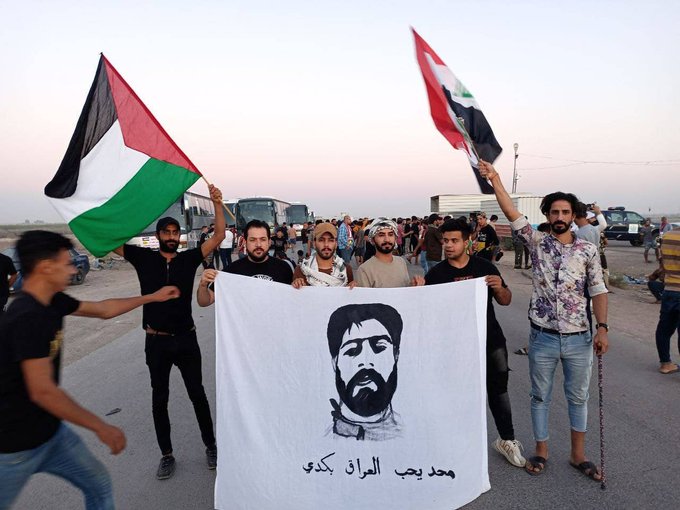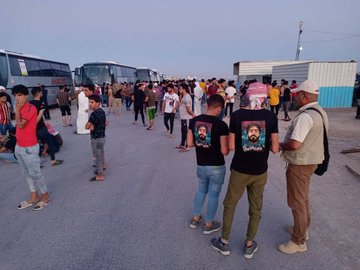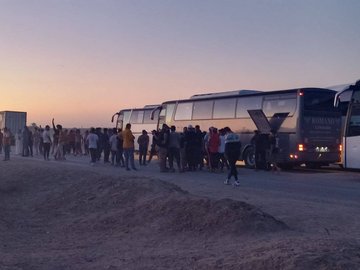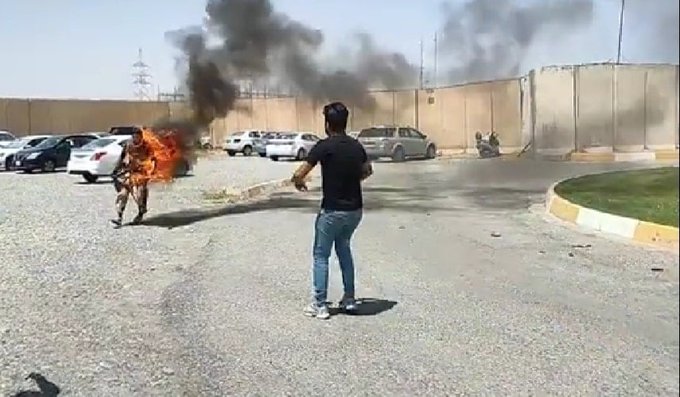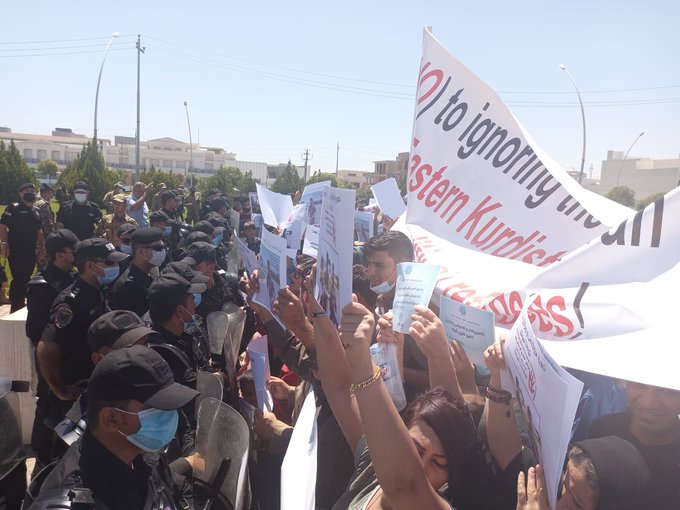Movie stars. Ever wonder what people 50 years from now will think of our choices today? Or if our choices today will even be remembered?
Actors whose careers took place before I was born include Gene Kelly and Cary Grant and I love both of those guys. It also includes, for example, Tyrone Power and Errol Flynn. Both are barely remembered today. I don't mean that as an insult, they are remembered. You could argue that their bisexuality is what has kept them remembered while bigger stars have been forgotten.
Tyrone? I never got him. Judy Garland loved him like crazy. Women thought he was good looking. I look at him in a movie and he does nothing for me.
Errol Flynn? He's got actual magnetism. His appeal still translates today.
I didn't know much about him other than that he was bisexual, had a torrid affair with Lana Turner and was a movie star. ERROL FLYNN: THE QUEST FOR AN OSCAR by James Turiello is a book available from KINDLE UNLIMITED. It's a good book, a strong one and Turiello does a great job not just covering Flynn but also explaining how he (Turiello) came to love movies.
Flynn's life was exciting and filled with many moments including a rape trial. Turiello does a good job covering those events and also a great job offering perspective by using modern actors like Clint Eastwood and Robert De Niro as comparisons and contrasts.
The book comes alive and is a joyful read.
Closing with C.I.'s "Iraq snapshot:"
Friday, May 21, 2021. Protests continue in Iraq, a man setting himself on fire in the KRG because of the asylum process results in blaming . . . the press, and much more.
Starting with this:
NASA has named three students the winners of the Artemis Moon Pod Essay Contest for their creative visions of a pioneering journey to the Moon. Nearly 14,000 students entered the contest, each competing for the grand prize: a trip to NASA’s Kennedy Space Center in Florida, where they will witness the first launch of the Artemis era.
NASA invited students to envision themselves leading a crew, or “pod,” on a mission to the Moon’s South Pole, and capture these ideas in their essays. NASA and Future Engineers, an online platform for student challenges, launched the contest in September 2020 for K-12 students nationwide. The contest’s goal is to encourage the Artemis Generation – kids growing up during the era of NASA’s return to the Moon – to think ahead about the human and technological needs of a lunar expedition. What types of tools or technologies would they bring to the Moon? Who would they include in their “pod” of crewmembers? What would they leave behind for future lunar crews to use?
Grand-prize winning essays in the three, grade-level-based categories are:
- Kindergarten through fourth grade category: Austin Pritts of Wolcott, Indiana.
- Fifth through eighth grade category: Taia Saurer of Laguna Beach, California.
- Ninth through 12th grade category: Amanda Gutierrez of Lincoln, Nebraska.
“I want to extend my congratulations to the amazing Artemis Moon Pod Essay winners. NASA shares your excitement for humanity’s return to the Moon, and we are so inspired by your creative ideas for how to lead that expedition.” said Kathy Lueders, associate administrator for the Human Exploration and Operations Mission Directorate (HEOMD) at NASA Headquarters. “Get your boots ready, because you are the next era of space explorers – the Artemis Generation.”
Students across the nation wrote in to share their visions of a weeklong mission to the Moon’s South Pole. Over 1,000 educators, professionals, and space enthusiasts served as volunteers for the first round of judging, and selected 155 semifinalists in March 2021. The list was narrowed further to nine finalists in April. A panel of four judges, including two from HEOMD and two from the agency’s Office of STEM Engagement, conducted virtual interviews with the finalists about their essays and ideas before choosing the three winners.
Pritts’ essay, “My Mission to the Moon,” tells the tale of a daring Moon Pod crew consisting of a test pilot/navigator, chemist, and mechanical engineer who establish a permanent lunar research facility powered by Kilopower Reactor Using Stirling Technology (KRUSTY).
In “One Week on the Moon – The Artemis Adventure,” Saurer’s vision for the Moon Pod mission calls for a four-person crew – including the first woman to step onto the Moon – to build a habitat for future astronauts using a combination of lunar soil and a fibrous fungal material called mycelium.
Gutierrez’s composition, “Dream Big Moon Pod,” follows the adventure of a three-person crew of a chemist, hydrologist, and astronautical engineer as they install an Endothermic Electrolysis Reactor (EER), designed to provide fuel and oxygen for future crews at the Moon’s Shackleton Crater.
“I can’t tell you how inspiring and energizing it’s been to read these essays and see the students’ enthusiasm and creativity in action,” said Mike Kincaid, NASA’s associate administrator for the Office of STEM Engagement. “The future of space exploration is in good hands.”
The contest was a collaborative effort between NASA’s Office of STEM Engagement and the Human Exploration and Operations Mission Directorate, in partnership with the online platform Future Engineers.
Through Future Engineers, the grand prize winners will have the opportunity to travel with their families to NASA’s Kennedy Space Center in Florida to see the first launch of NASA’s Space Launch System rocket and Orion spacecraft during the uncrewed Artemis I mission. On this first flight of the Artemis program, the Orion spacecraft will travel beyond the Moon, nearly 280,000 miles away from Earth – farther than any spacecraft built for humans has ever traveled – during a three-week mission.
The 13,898 essays submitted to the Moon Pod Essay Contest will fly on a USB flash drive aboard Artemis I, and NASA will provide each student who participated a signed certificate. Each semifinalist will get the chance to learn even more about Artemis through a series of virtual Artemis Explorer Sessions with NASA experts, along with an Artemis prize pack filled with fun educational materials. The contest’s nine finalists also will have the chance to travel with a parent to the agency’s Johnson Space Center in Houston to learn more about lunar exploration.
The Moon Pod Essay Contest aligns with NASA’s Artemis Student Challenges, an ongoing collection of engineering and technological design challenges allowing students worldwide to learn about human spaceflight topics and technologies.
Future Engineers hosts online innovation challenges for K-12 students. In 2014, Future Engineers launched its inaugural 3D printing in space challenge, sponsored by the American Society of Mechanical Engineers Foundation with technical assistance from NASA, which produced historic achievements including the first student-designed 3D print in space. Through the support of the U.S. Department of Education's Small Business Innovation Research Program, Future Engineers launched a multi-challenge platform in 2018 capable of hosting Science, Technology, Engineering, Art, and Math (STEAM) challenges of all kinds.
For more information on NASA’s Office of STEM Engagement, visit:
-end-
Katherine Brown
Headquarters, Washington
202-358-1288
katherine.m.brown@nasa.gov
Betty noted the above in her post last night. She noted we needed more of a focus on science in the US and that she wished every outlet was noting this news. Congratulations to the three winners and to all the students who participated in the competition.
Turning to the Iraq War, to date, the largest global protests remain the protests against going to war on Iraq in 2003 right before the start of the war. Do you ever wonder that if people knew back then that in 2021 US troops would still be on the ground in Iraq, would the protests have been even larger?
Protests take place in Iraq to this day. Activists are attacked regularly. ttio_i Tweets:
The protesters have been targeted and hunted. Sunday, May 9th in Iraq (still Saturday, May 8th, in the US), activist Ihab Jawad al-Wazni became the latest to be assassinated when he shot dead in front of his home in Karbala. Belkis Wille (HUMAN RIGHTS WATCH) notes:
When protests erupted in Baghdad and other parts of central and southern Iraq in October 2019, tens of thousands of mostly young people took to the streets demanding improved government services and more action to curb widespread corruption. The protests quickly evolved into calls for accountability as security forces repeatedly employed excessive force against them, killing hundreds of the largely peaceful demonstrators.
Although the protests have since diminished, those killings have not, as various armed groups continue to target critics of the government, including journalists and activists, in a vacuum of impunity. If the authorities are not able to take urgent steps to stop these extrajudicial killings, the palpable climate of fear they have created will severely limit the ability of Iraqis who have been calling for change to participate in upcoming parliamentary elections slated for this October.
In late 2019, protesters were initially demanding more government action to rein in corruption and ensure adequate access to electricity, water and jobs. But when armed forces in Baghdad and other parts of Iraq used live ammunition to target the demonstrators—and even abducted, abused and killed protest organizers—they pushed those still on the streets to galvanize around calls for accountability for that repression. Then-Prime Minister Adil Abd al-Mahdi was unable to stop the killings or hold those responsible accountable. He resigned in November 2019, paving the way for a caretaker government led by Mustafa al-Kadhimi to step in pending new elections.
While some observers, myself included, viewed these events with deep despair because of the death toll of more than 500 people, others I spoke with in Iraq kept highlighting what they saw as a major achievement of the protest movement. Demonstrators in Baghdad's central Tahrir Square were eager for an opportunity for political change—a chance to rewrite the social contract between the Iraqi government and the people written in the aftermath of the American invasion and occupation. Many spent their months in the square discussing political ideals and ultimately forming political parties with civic-minded platforms. Some protesters, rights activists and even foreign diplomats in Baghdad were quite optimistic at that point that the movement would be able to secure real change.
But instead, over the past year and a half, the protests waned, while the killings have continued. The Independent High Commission for Human Rights of Iraq has reportedly registered 81 assassination attempts against anti-government activists and journalists since the demonstrations began, 34 of which have been successful. Almost a third of the killings have taken place since Kadhimi took office a year ago.
Many of these killings and abductions have targeted the people who were leading voices during the demonstrations and journalists who covered the unfolding events in Baghdad and other centers of protest. Despite the gravity and scale of the ongoing assassination campaign, Kadhimi's government has failed to ensure any accountability or justice.
Soon after taking office, Kadhimi established a committee last May to investigate and hold accountable those behind the killings of protesters—but it has yet to publish any findings. There are few other signs that he has made any other progress. Armed groups have become so brazen that gunmen have no fear approaching someone in the middle of the street in a major Iraqi city and shooting them without consequence.
Perhaps the strongest message of impunity was sent by the killers of Dr. Hisham al-Hashimi, a member of the political elite in Baghdad and a close ally and adviser of the prime minister, who was assassinated in July 2020. Despite Kadhimi's commitments to hold his murderers to account— "We promise the killers that we will go after them so they may be served their just punishment," he said—the crime went unpunished. It felt to me, and to many others, like a checkmate moment between these killers and the Iraqi government.
Because of these targeted killings, many Iraqis who led the protests and who were keen to become the soul of a new political movement in Iraq have fled their homes in fear or gone silent. Some, if not most, will most likely no longer risk carrying out a public political campaign focusing on calling out those behind these abuses, or on reviving protesters' demands for accountability.
And so, instead of political change, the main outcome of the protests may instead be to further plunge Iraq into lawlessness. Many of the armed groups behind the recent killings have political parties, some of which are already in parliament. The parties may be able to use the upcoming elections to entrench themselves among the ruling elite. The more these groups are able to enter the governing structure and co-opt efforts to stop the killings—and provide justice for victims—the bleaker Iraq's future looks.
The impunity exists because the press ignores what happens and works to erase the protest movement.
Ihab was assassinated. Major US media outlets covered that how? THE WASHINGTON POST did a prominent report. The rest? Silence. Almost two weeks ago and silence. Silence over the assassination. Silence over his family's response. Silence over the protests that took place. Silence over the next protest scheduled to take place May 25th. Silence.
It's worse than that though.
Last weekend, protests took place around Iraq against the Israeli government's assault on the Palestinians. The Baghdad protest got some attention from western outlets. But it wasn't accurate attention.
The protests were called for by the ongoing protest movement (the October movement, named for their start date being credited as October 1, 2019), it was called by cleric Moqtada al-Sadr, it was called by various other militia leaders, it was called by other organizations and other politicians.
But the press ignored all of that to turn the story into Moqtada calls protest, people turn out. Now the Iraqi press didn't make that mistake. They would have had their heads handed to them if they had. But, time and again, the scant coverage that existed turned the protest into a Moqtada event.
This didn't happen with similar protests in the UK, Australia, the US, Japan, Canada, Germany, etc. There was no effort by the press to credit a single person with the turn out.
But in Iraq, the western press made it all about Moqtada.
Western outlets ignore it, but the protests against Israel's actions continue in Iraq.
Can't credit Moqtada with Karbala. Is that why they ignore it?
Protests continue in Baghdad to support the Palestinian people.
 & Iraqi
& Iraqi  flags and denouncing Israeli terrorism and genocide against Palestinians
flags and denouncing Israeli terrorism and genocide against PalestiniansMoqtada's not involved in that protest either. Is that why the western press ignores it?
Zahra Ali Tweets:
That's the October Movement. That's not Moqtada.
The western press took an issue that inflamed all Iraqis and turned it into "Look, everyone's supporting Moqtada!" Moqtada no longer even has the support of all residents of his slum Sadr City. Nor should he. Nearly two decades of 'leadership' and Sadr City remains a slum, a hazard to live in during the rainy season. He has repeatedly failed to deliver. That's a fact the western press also appears eager to ignore.
We're going to drop back to Wednesday's snapshot to note another issue:
In other news, we hear often of Iraqis who have sought or are seeking asylum outside of Iraq. The US government, for example, has done damn little to assist those in need. But Iraq is also a country in which people seek asylum. Ghazi Ghareeb Zorab Tweets:
Medics in Arbil treating Mohammad Mahmoudi, 27, said he was in a critical condition.
Before setting himself on fire, Mahmoudi was filmed on a video posted on social media saying he had fled Iran because he was a critic of authorities in Tehran.
“Are we supposed to live the way I live because of my political activity? Is that life?” he said. “We have been living like homeless dogs for four years”.
Friends of Mahmoudi told AFP he is a former Peshmerga and dissident originally from the Boukan region, 480 kilometers (300 miles) west of Tehran, but had sought sanctuary in neighboring Iraq’s autonomous Kurdish region.
A day laborer, he submitted an application for refugee status to the United Nations four years ago, but his request was still reportedly under review, friends said.
“If I return to Iran, I will be executed,” Mahmoudi said.
Shahram Mirzaei offers this Twitter thread:
There is no Kurdish homeland. The closest thing to a Kurdish homeland is the area Mohammad set himself on fire in, the semi-autonomous Kurdistan region of Iraq.
Today, NRT Tweets:
Journalists in the Kurdistan Region of Iraq were criticized by local authorities and on social media Tuesday after a man they were interviewing set himself on fire.
A man from the western Iranian city of Bukan “carried out an act of self-immolation” in front of the United Nations headquarters in Erbil on Tuesday, the Kurdistan Regional Government (KRG) said in a statement.
Video of the graphic incident posted on Kurdish social media showed the man speaking to reporters from a few media outlets holding a yellow liquid. He then poured the liquid on himself, set himself on fire and ran away from the journalists as the camera continued recording.
The Erbil-based news outlet Rudaw identified the man as Behzad Mahmoudi, a 25-year-old Kurd from Iran. He survived the incident; he told Rudaw that he has no work and money and was dismissed by the UN High Commissioner for Refugees (UNHCR) after asking for help.
The journalists at the scene received criticism on Kurdish social media for documenting an event in which the source was clearly in danger. “In what world do TV presenters interview a man with gasoline in his hand and a lighter, who is threatening to set himself ablaze?” wrote Ruwayda Mustafah on Twitter.
The following sites updated:



